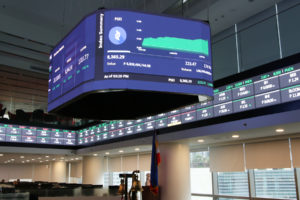Philippine electronics exports are at significant risk of being harmed if China—the country’s top market—gets its consumer electronics slapped with tariffs next month in the ongoing US-China trade war, an Oxford-based research firm said.
Oxford Economics said in a research briefing on Thursday that there was still much uncertainty stemming from the trade tensions despite the relief brought by the first phase of the US-China trade deal last month.
While US President Donald Trump stopped a planned round of tariffs last month because of the trade deal, he had not yet dropped the plan to slap a 15-percent tariff on Chinese exports to the United States this December.
The tariff would be slapped on consumer electronics such as cellphones and personal computers, an added cost that would come at a time when consumers were on a spending spree because of the holiday season.
Thatchinamoorthy Krshnan, an economist in the research firm, said that “the risk is significant that such tariffs would hurt Philippine exports” since electronics account for more than half of the products the Philippines ships abroad.
China, when combined with Hong Kong, is the Philippines’ top export market for electronics exports, according to latest available data from industry group Semiconductor and Electronics Industries in the Philippines (Seipi).
“In all, we conclude that the outlook for the Philippines’ electronics sector remains challenging, which doesn’t bode well for its manufacturing and exports outlook either,” the economist added.
Krshnan said this dampened the otherwise encouraging signs that could help boost local exports such as the increase in Chinese imports (not just from the Philippines) since the middle of the year.
Whether or not this would derail the trajectory of the local industry remains to be seen, especially as it also has to deal with the uncertainty in the Philippines arising from the move to rationalize tax incentives.
Latest available data from the Philippine Statistics Authority showed that the value of exported electronic products had grown significantly slower compared to last year.
From January to August this year, electronic exports went up by only 1.9 percent to $26.05 billion. The same eight-month period last year, however, grew 5.7 percent to nearly $25 billion from 2017.
Seipi president Danilo Lachica has not yet responded to a request for comment as of press time.


